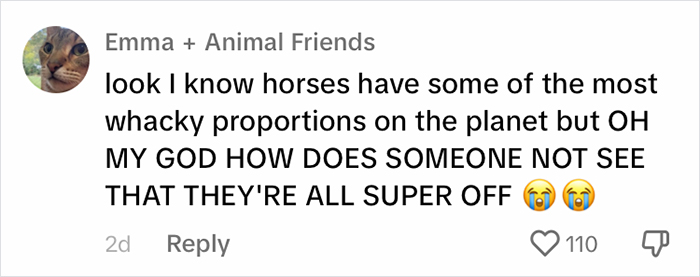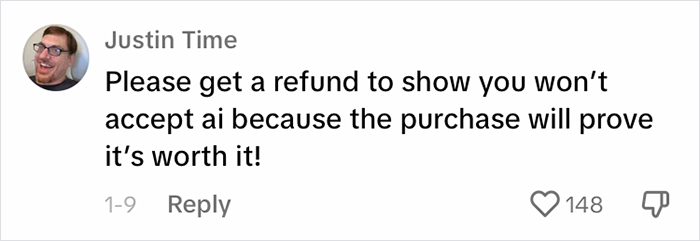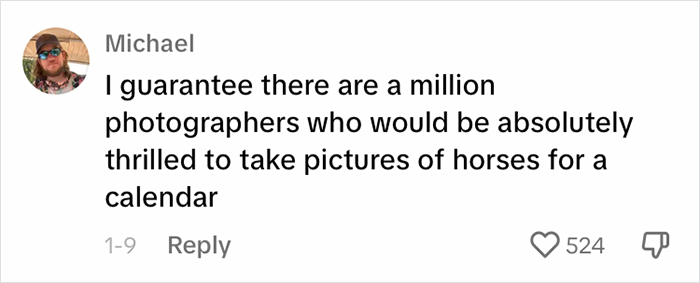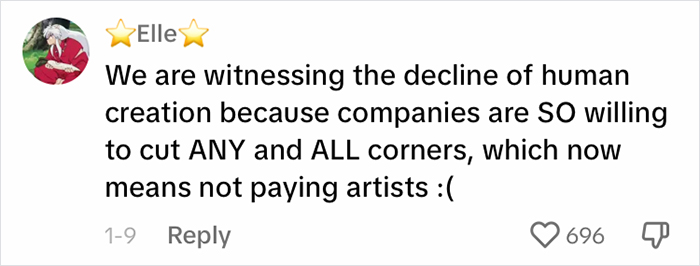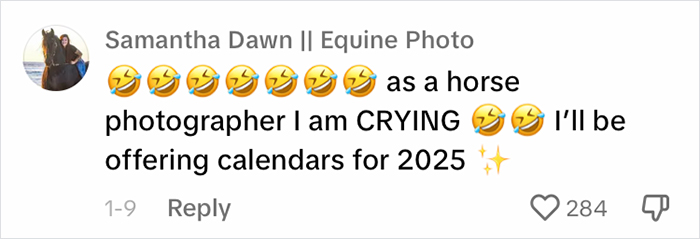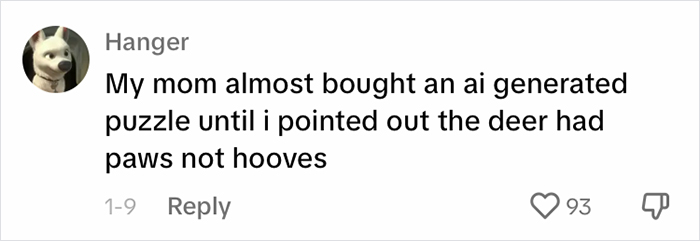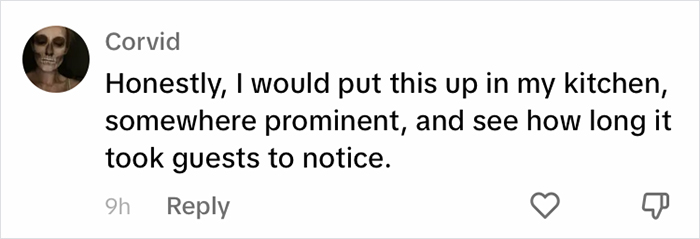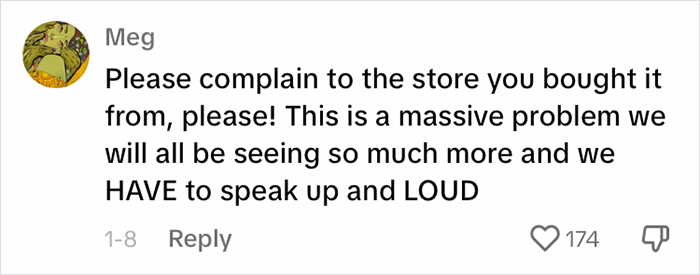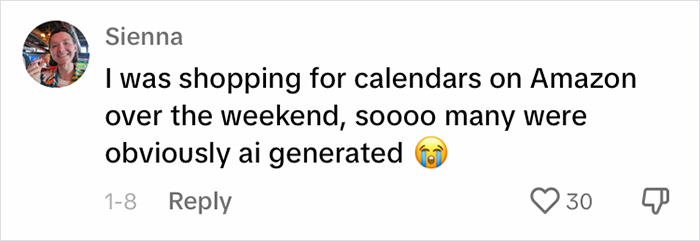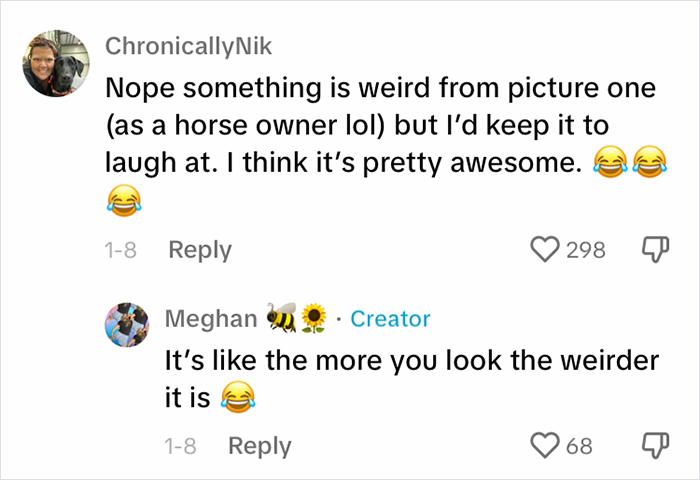The calendar is a popular addition to many households, both as a tool for tracking dates and as a simple decor element.
However, when TikTok user Meghan unpacked the one she got for her suburban 3/4-acre homestead in Ohio, the woman noticed something was off.
As she flipped through the pages, Meghan noticed that many of the horses, which were supposed to be the main feature of the publication, were disfigured and contorted.
This woman bought a horse calendar for 2024, but she noticed there was something odd about it
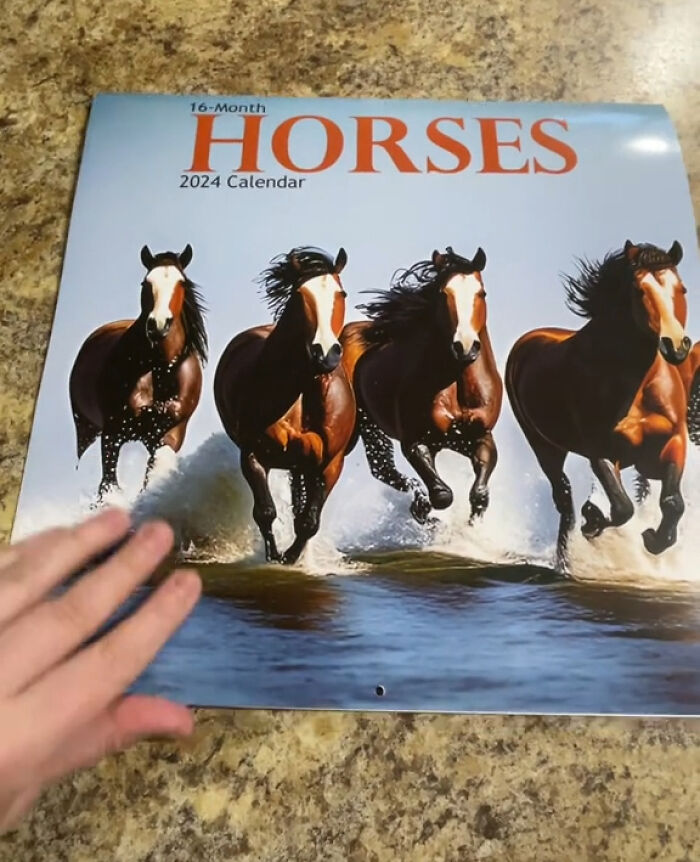
More specifically, the horses that ‘posed’ for it
“Okay, so I got this calendar in like October. I’d just seen the Barbie movie. I was like, ‘yay, horses, that sounds like fun.’ Well, we just opened it. It’s January 8 today. And my boyfriend points out ‘I think this was made by AI.’ Like, how can a calendar that I buy at the grocery store for 99 cents be made from AI? I mean, look at these horses.”
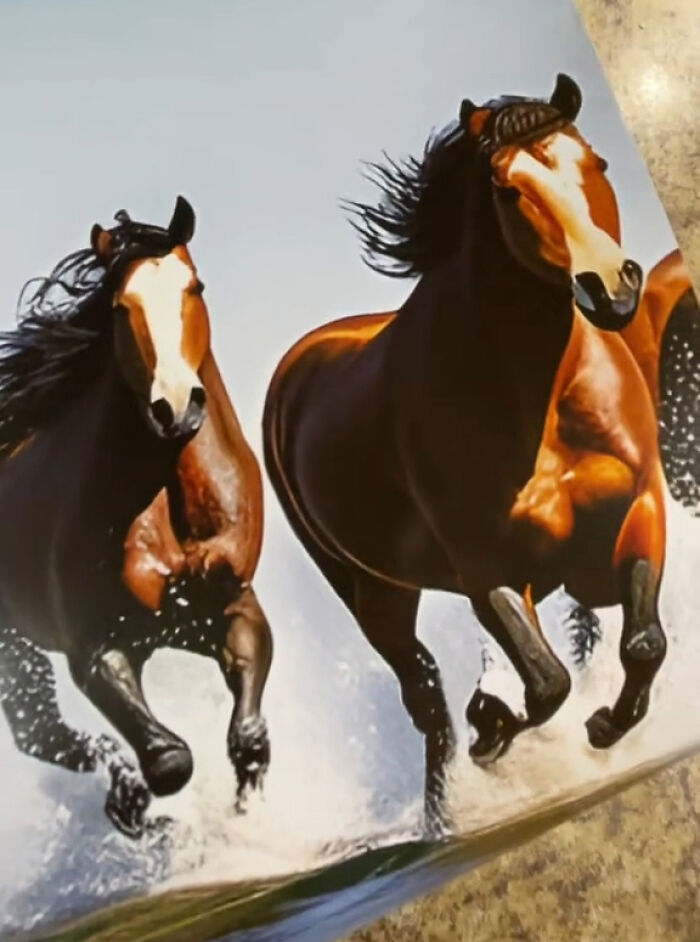
“They do look pretty fake. If you zoom in, they’re kind of pixelated. So I’m like, ‘yeah, I guess it could be AI, but I’m not really sure.'”
“Look at that horse. It’s pretty idyllic. It almost looks CGI”

“The sand looks kind of weird. Looks kind of fake”
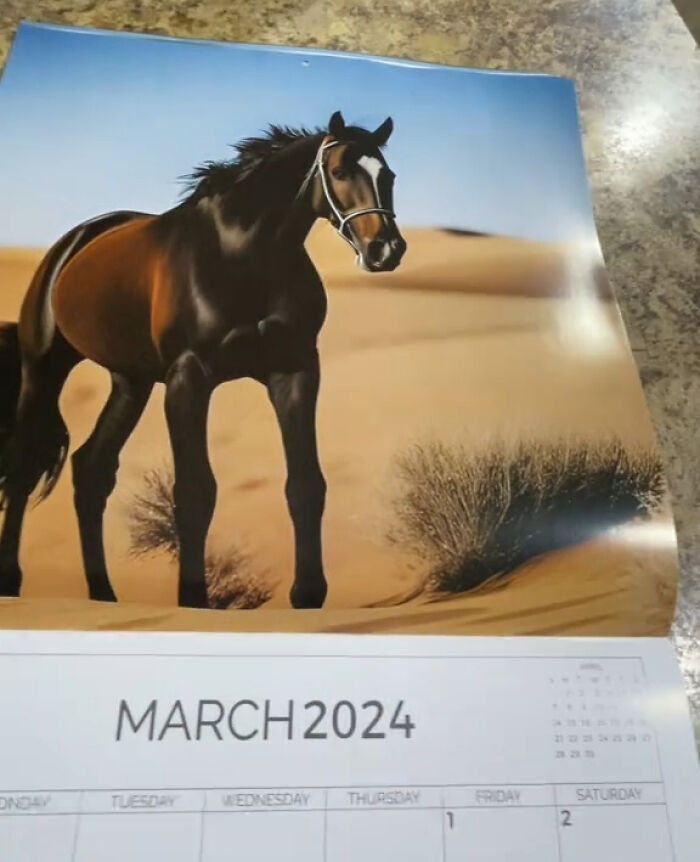
“April. Yeah, like look at those hooves. Those don’t look real, what’s going on at the knee?”
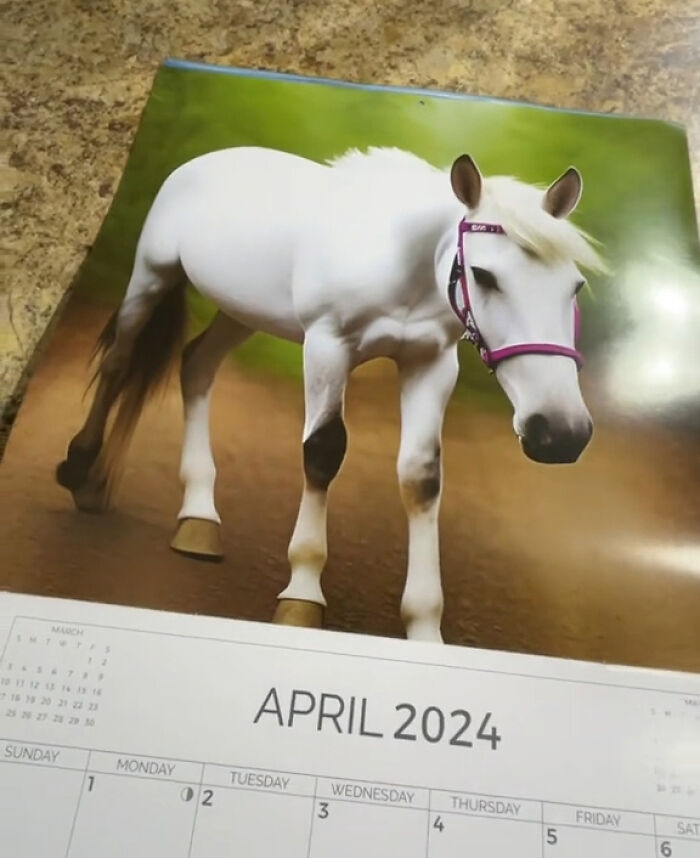
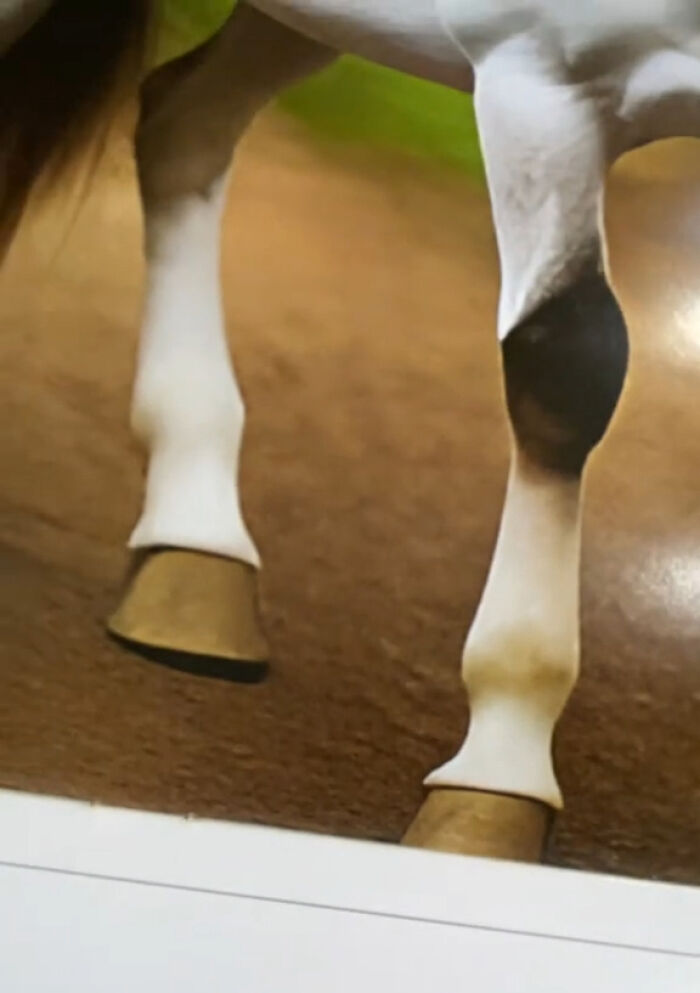
“But then I get to this. To May. Everything looks fine, right? What the hell is this? What? Where are their faces?”
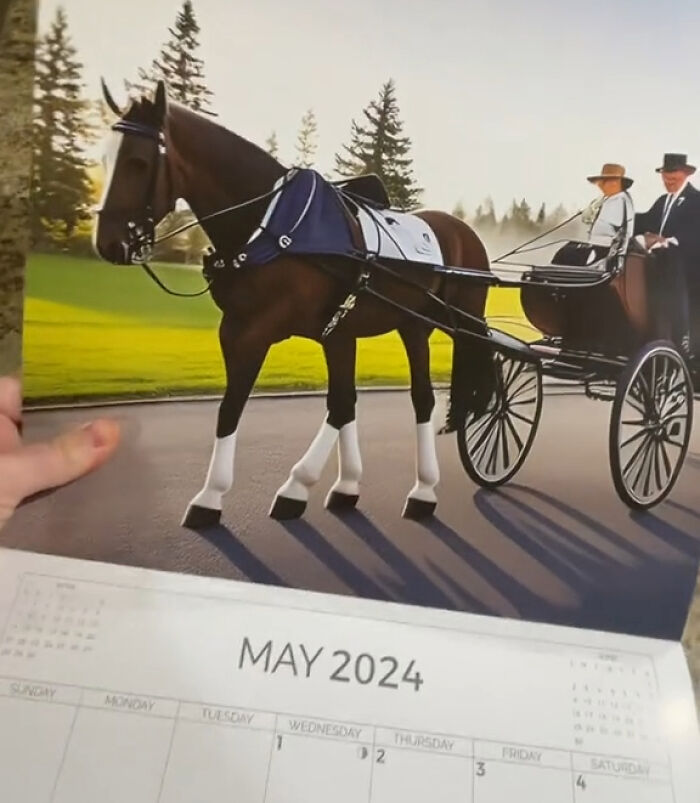

“It’s got like five legs. There’s a leg back there. There’s the leg in the front. And then one leg splits in two. How’d they do this?”
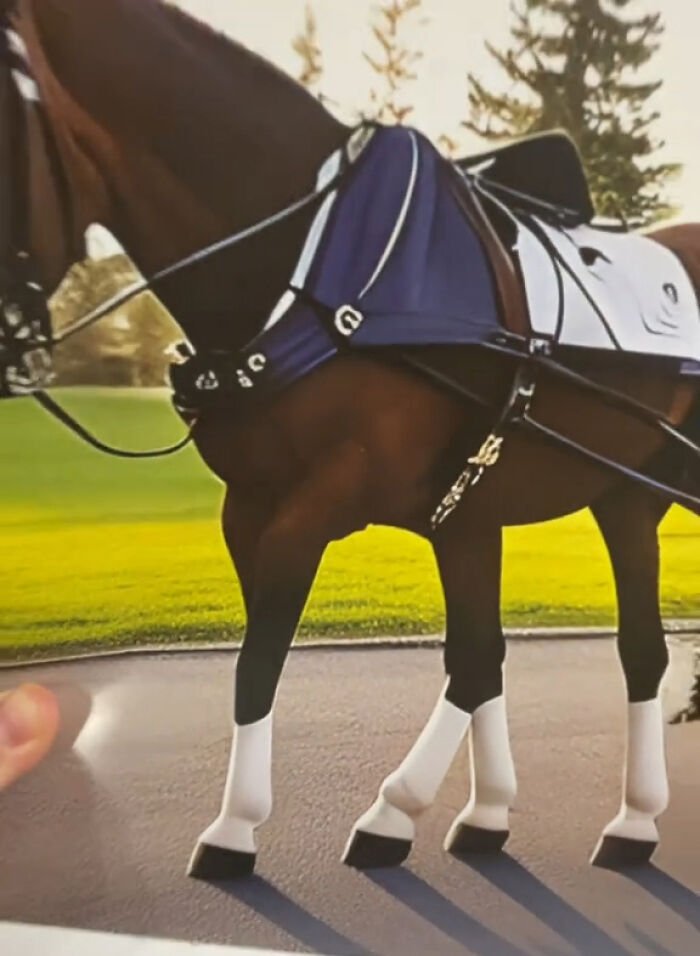
“And then look at this horse’s eye. Oh my god. So this is cursed. And it’s going in the trash. Thank you”
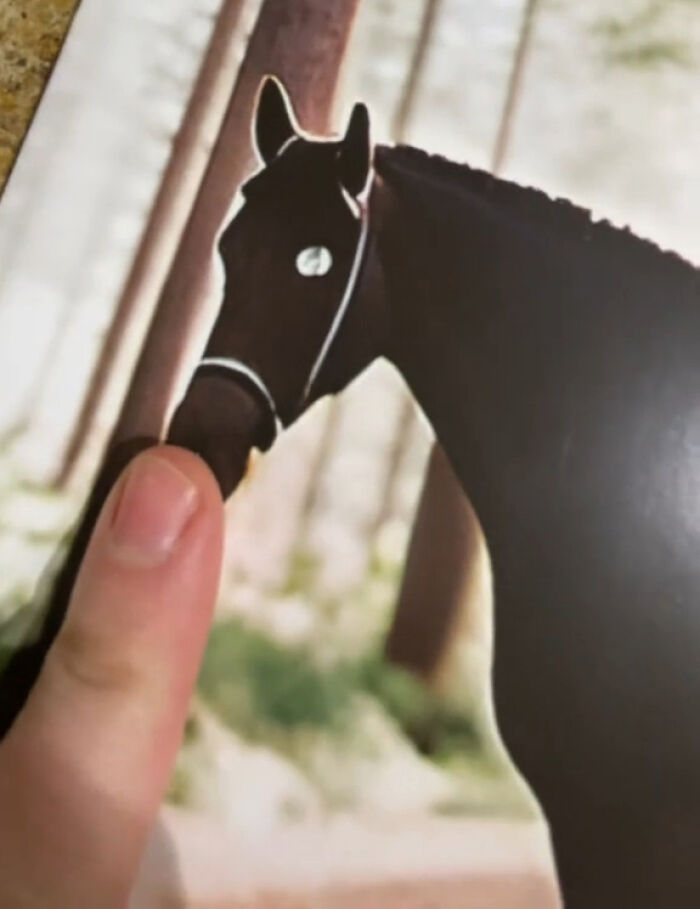
“Look at this cowboy. What’s happening with the hat? Which of those lumps is its chin? Look at the hands?”
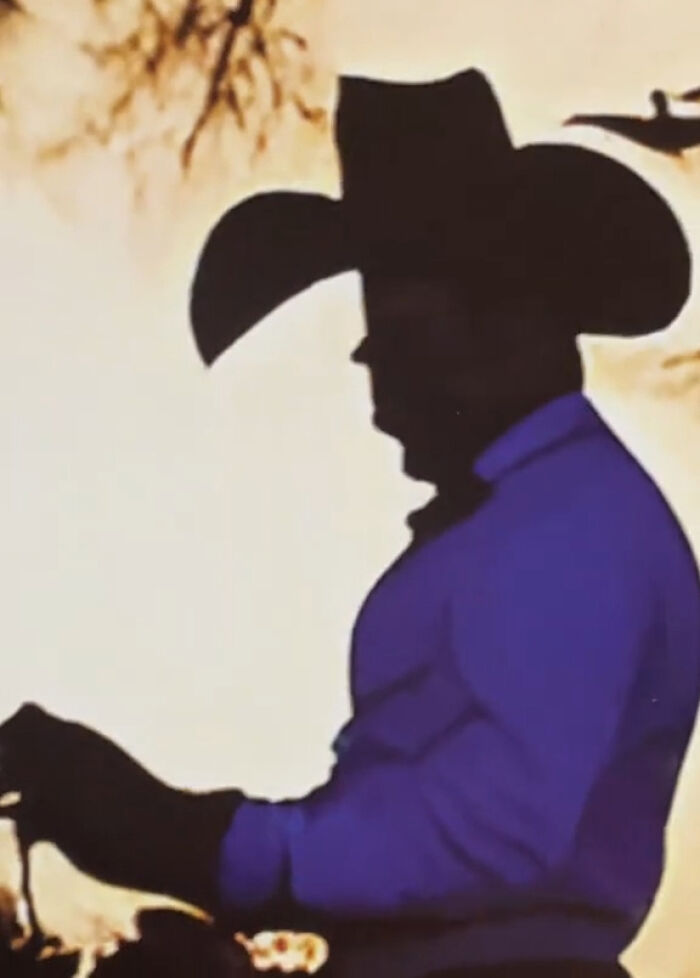
“Look at this horse. What is the lump and then its neck is like, blending in with the background?”
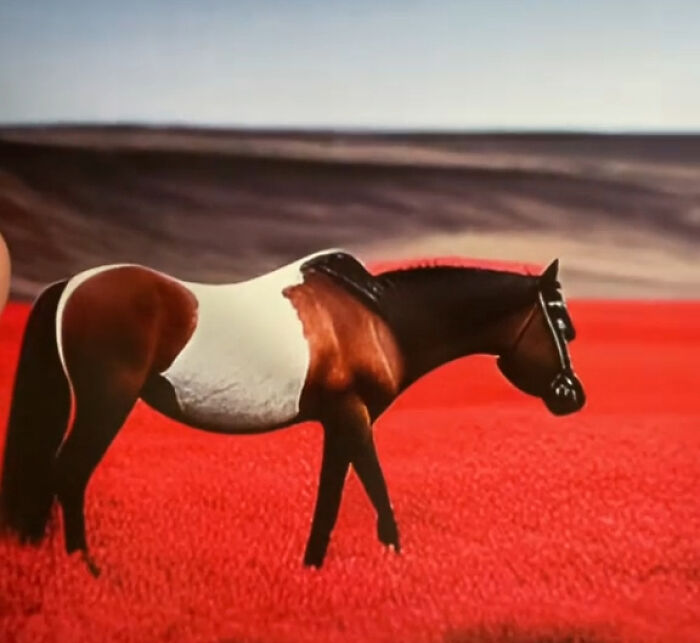
“This horse has a strap that goes to nothing”
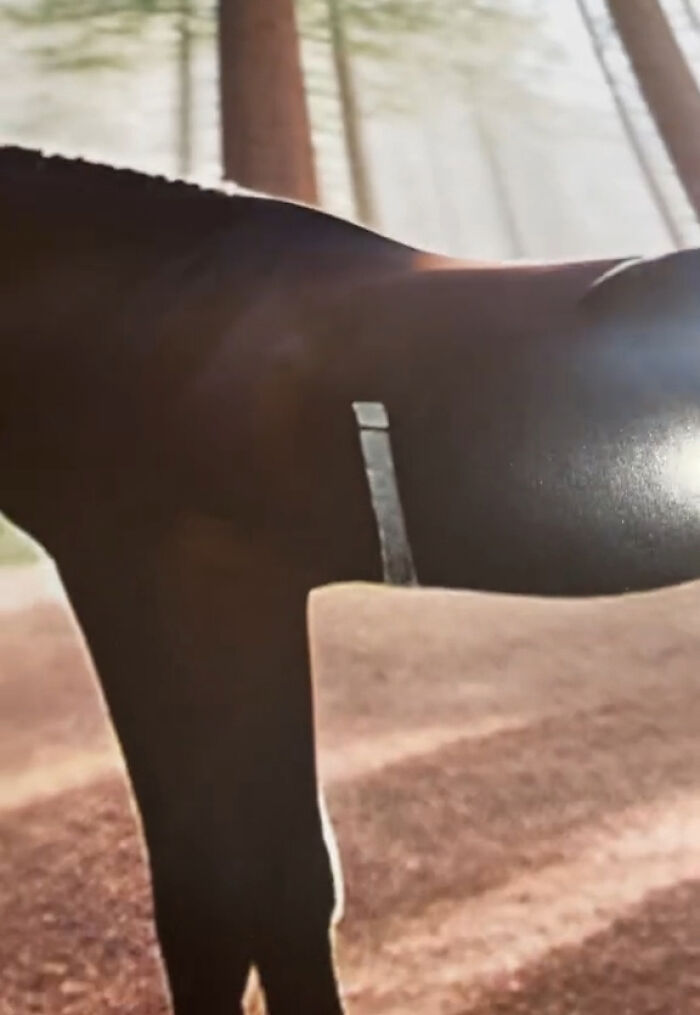
“The ferns are creepy blobs. So sad that they didn’t want to pay any photographers and did this. This should not exist”

Meghan’s video has gone viral
@shitty_weather_gardening Sorry horse photographers. #horse #horses #ai #creepy #matrix #simulation #funny #fyp ♬ original sound – Meghan 🐝🌻
Companies that plan to sell artificial intelligence products should first consider how people regard work created by AI
As we can see from Meghan’s story (and, for example, our publication When AI Goes Wrong In The Best Way: 50 Cursed and Hilarious Pictures), artificial intelligence still has its fair share of problems when it comes to creating life-like images. However, when it succeeds, we’re kind of OK with it.
Postdoctoral fellow at the Psychology of Technology Institute Yunhao Zhang and MIT Sloan senior lecturer and research scientist Renee Richardson Gosline studied how people perceive work created by generative AI, humans, or some combination of the two, and they found that when people knew a product’s source, they expressed a positive bias toward content created by humans.
Yet at the same time, and contrary to the traditional idea of “algorithmic aversion,” people expressed no aversion toward AI-generated content when they knew how it was created. When respondents were not told how content was created, they even preferred AI-generated versions of it!
For their study, researchers created two tasks: writing marketing copy for five retail products and drafting persuasive content for five uncontroversial campaigns (such as, “eat less junk food”). They tackled these tasks in four different ways:
- For the human-only approach, they enlisted professional content creators from Accenture Research to draft the marketing copy and campaign goals;
- The augmented human approach first used AI (GPT-4) to generate ideas. Human consultants then shaped them into final products;
- The augmented AI approach worked the other way, with humans creating drafts and generative AI being used to mold them into final products;
- The AI-only approach had GPT-4 complete the task on its own.
Participants in the experiment came in to evaluate the quality of this work and were split into three groups: one group knew nothing about the content creation process, the second group knew about the four different approaches but was told nothing more, and the third group knew which approach was responsible for each piece of content they viewed.
According to Gosline, this nuanced method was essential to creating an accurate picture of the world. While many studies compare the work of humans against the work of AI, “in reality, our everyday experiences reflect a much more subtle gradation, where we have human decision-making shaped by algorithms or algorithms in which people are in the loop,” she said.
“We wanted to get a fine-grained understanding of the various ways in which humans and AI can collaborate and, from that, get a better sense of what kinds of biases people hold.”
Two key insights emerged. First, when people had no clue about the source of the marketing or campaign copy, they preferred the results generated by AI.
But when people were told the source of the content, their estimation of work in which humans were involved went up, or as the researchers put it, they expressed “human favoritism.” Their assessment of content created by AI, however, didn’t change, undermining the notion that people harbor a form of algorithmic aversion.
“The most direct implication is that consumers really don’t mind content that’s produced by AI. They’re generally OK with it,” Zhang added.
When we’re talking about the images, though, and the ‘models’ are discombobulated, even 99 cents for a calendar doesn’t seem entirely worth it.
People have had many funny and strong reactions to it
